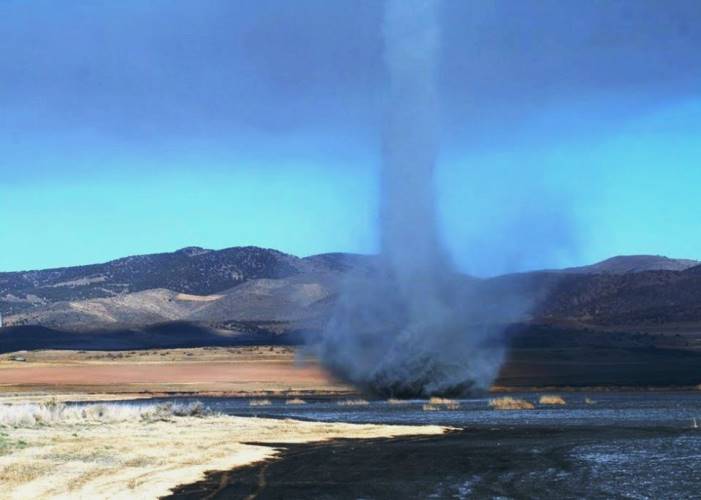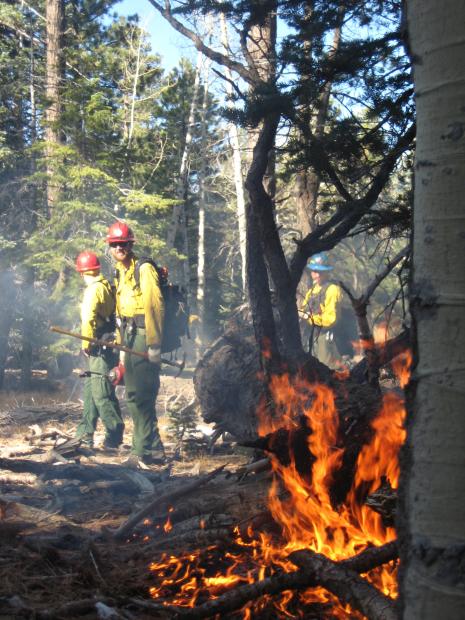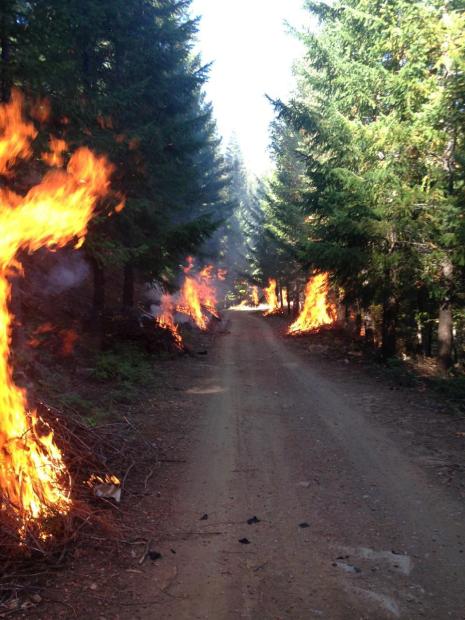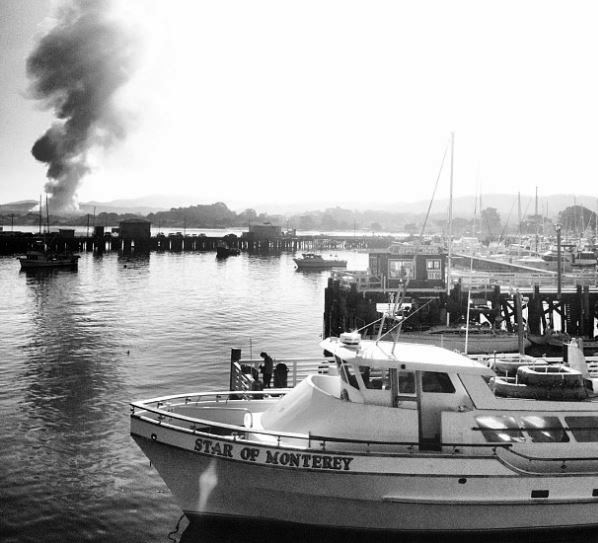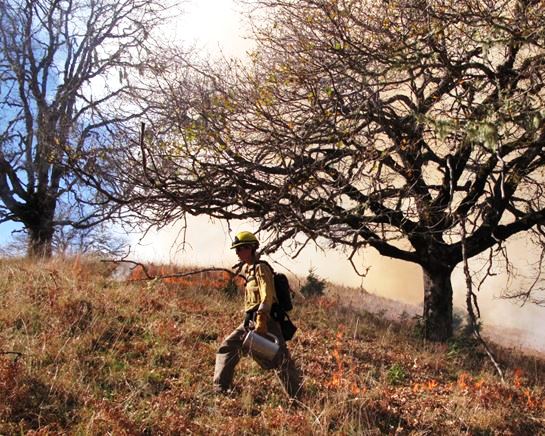
Today we have an article written by guest authors, about a 40-person task force that conducted training and then executed 14 prescribed fires in northern California.
****
Prescribed fire taskforce mobilizes for 14 days in northern California
By Jeremy Bailey, The Nature Conservancy, and Lenya Quinn-Davidson, Northern California Prescribed Fire Council
For the last two weeks, 40 men and women from across the U.S. and Spain traveled as a team and completed prescribed burns throughout northern California. Burning adjacent to homes (right up to the back porch in some cases) and in more remote areas, too, the firefighters on the taskforce experienced a wide spectrum of prescribed fire situations, including burning in a range of fuel types and learning how to communicate effectively with the media. By the end of the 14-day assignment these firefighters had burned 389 acres on 14 separate burn units on both federal and private lands. Sponsored by the Northern California Prescribed Fire Council (NCPFC), the taskforce was made up of students, municipal and wildland firefighters, researchers, scientists, photographers, managers, ecologists, private contractors, and even an air quality regulator. A year of planning and coordinating went into building the taskforce and working with the burn hosts, who completed burn plans and prepped control lines. The NCPFC provided the management team, nearly equivalent to a Type 3 Team. The Incident Commander was supported by Plans, Logistics, Operations and Training officers, and several additional burn bosses worked on the team to provide day-to-day burn leadership; in some cases, the taskforce was able to burn in multiple locations simultaneously.
The taskforce was organized as part of a Training Exchange (TREX), an experiential training where firefighters and practitioners learn by doing. Organized by fire leaders from The Nature Conservancy and the Northern California Prescribed Fire Council, and implemented through a collaborative effort of federal, state and private land managers, the Northern California Prescribed Fire Training Exchange blended classroom learning and field experience into a 14-day assignment. The TREX taskforce mobilized to four different locations and accomplished key burns in each place. Firefighters worked on position task books, such as Resource Unit Leader, Burn Boss, Firing Boss, and Fire Effects Monitor. Additionally, there were four firefighters who completed the online S-130 & S-190 coursework and finished their field day requirements on the controlled burns. As the crew t-shirt said, the group spent two weeks “Burning Together, Learning Together.”
Participants spent the first few days in the classroom learning from local scientists, subject experts and managers, and then practicing locally appropriate tactics and becoming familiar with their squad members and equipment. During the two-week assignment, the TREX taskforce burned at Redwood National Park, Whiskeytown National Recreation Area, Bar 717 Ranch in Trinity County, and numerous private parcels in the Klamath River basin near Orleans, CA. It was a great learning opportunity to go from the National Park Service sites to the private lands. All plans and operations met National Wildfire Coordinating Group (NWCG) standards and were led by Type 2 burn bosses. The firefighters brought or were provided the proper PPE. Landowners, neighbors, managers and other VIPs were encouraged to participate in daily briefings, line scouting and After Action Reviews. During the burning, unqualified staff, VIPs and guests were escorted and remained adjacent to safety zones.
There was a real push to prepare for media interactions; participants were trained in the use of key messages for interviews, and they rehearsed with flip phones and in practice interviews with TREX organizers. Their practice paid off when local reporters attended TREX burns. A TV reporter visited a burn in the Bald Hills of Redwood National Park, and participant interviews were included in a Friday night television broadcast. In Trinity County, participants were interviewed for a full-length newspaper story which was published this week in the local paper.
One of the primary principles that the cadre tried to instill is that “everyone is a teacher and everyone is a student”. One participant and former hotshot said it best when he wrote that the TREX provided “…an excellent balance of the science and application of Rx fire management, and a wonderful group of people to build working relationships with. I learned a ton…”
Please visit these sites to learn more about the Northern California Prescribed Fire Council, see more photos of our recent TREX on our Council Facebook page, and to learn where the next TREX will be held.



